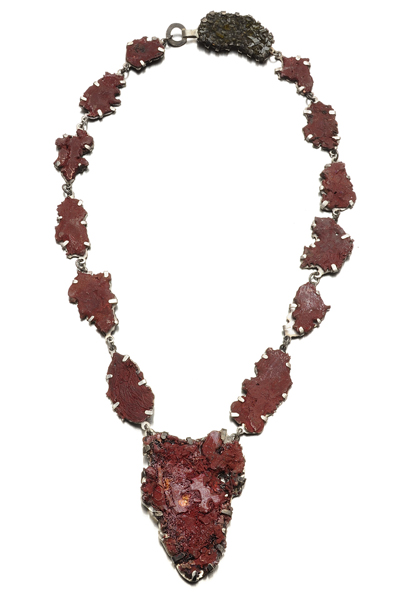
Kellie Riggs: When did your interest in contemporary jewelry begin, and how did that transform into a desire to open a gallery?
Antonella Villanova: The interest in contemporary jewelry was born about 10 years ago, at first with jewelry made by visuals artists, but I wasn’t satisfied. After, I started looking at the world of gioiello d’artista as we call it in Italian. I eventually opened the gallery in 2008.
A contemporary jewelry gallery is very unique to Florence. There are only a handful in Italy, mostly in Padova and one in Rome. Was that part of the appeal for you, to bring the field to the public of Florence?
Antonella Villanova: I believe my gallery might be the only contemporary jewelry gallery in Italy, not just in Florence, if by “gallery” you mean a worldwide promotion of the works of the artists or designers and the investment this promotion involves. It’s a constant production of projects. In Italy, there are cultural associations with only a few environments locally operating. I didn’t open my gallery in Florence because of an interest in the Florentine public, which is notoriously insensitive to contemporary art. I simply live in Florence, and I think it’s one of the most beautiful cities in the world with a huge potential because of its history. All of the world stops in Florence!
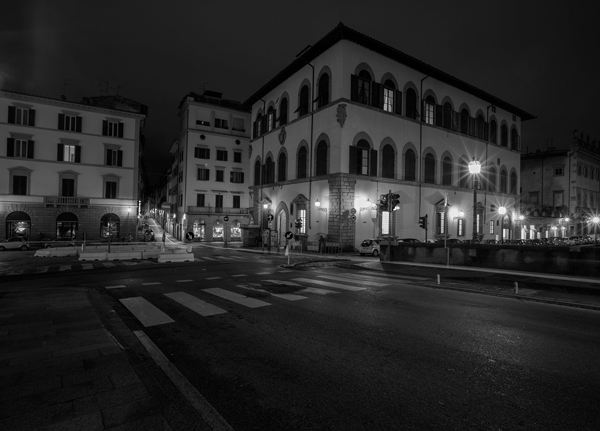
Antonella Villanova: I believe my work has been very important, but I feel loneliness. I’d like to see, as in contemporary art, more jewelry galleries. In November, I curated an exhibition in a very nice space in Turin, a jewelry exhibition with fairly good success. People don’t know this world and remain fascinated by it. The public I’m referring to is the one that collects art and design and only in few cases of jewelry, which I think, is only because knowledge about it is lacking.
The artists you carry are very diverse and mostly international in the sense that the vast majority are not Italian contemporary goldsmiths. Was this a conscious decision of yours, to distance yourself a bit from that category of work?
Antonella Villanova: I don’t look to artists’ nationality. I think that internationality of certain work doesn’t necessarily depend on geographic factors. “International” is something able to accommodate people far from one another in the geographical sense but close in sensitivity and taste. The world I refer to is the one of contemporary art. It’s the world I come from and the one I know, and in that world, I believe international means something beyond geography. But, it’s also something about literature, poetry, and music. Among the artists I collaborate with, there are some Italians, such as Lucia Massei and Daniela Boieri, and I include them based on the fact that I appreciate their work. There are no inclusions or exclusions independent from my personal taste and the guidelines of my gallery. I am also not really aware of any Italian genre, for example, from which to move away from.
As I understand it, your gallery has always been a sister gallery to that of your husband’s for contempory art, Galleria Alessandro Bagnai. Before April 2012, each shared a roof but had two distinct spaces with separate entrances. Can you talk about the shift of two spaces into one that both the galleries now share, the Palazzo Riscasoli in Piazza Goldoni? What inspired this move?
Antonella Villanova: It’s more than a relationship. I would say they are co-living for logistic reasons. The two galleries in Via della Spada were separated because the space allowed that. In Palazzo Ricasoli, it hasn’t been possible.
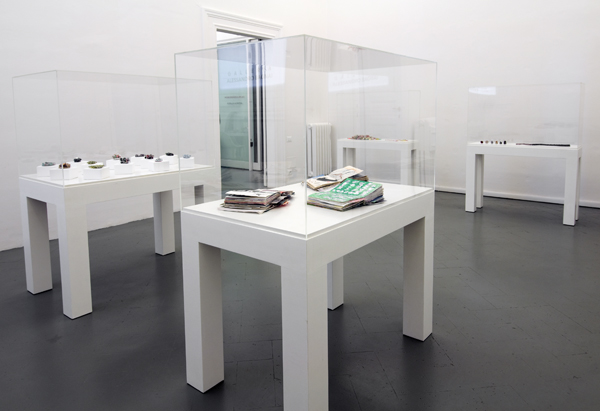
During the inauguration of the new space, there were two different exhibitions, and it seems most of the time you continue to do this. Do you plan to keep the galleries separate in this sense, versus a real merge?
Antonella Villanova: The two galleries have their own life, and we try to have a schedule that would allow each of the galleries to invade the space according to the needs of the exhibitions and artists. So far, we’ve succeeded in respecting one other in this way. In the future, maybe I’ll open another space … maybe not in Florence … I don’t know.
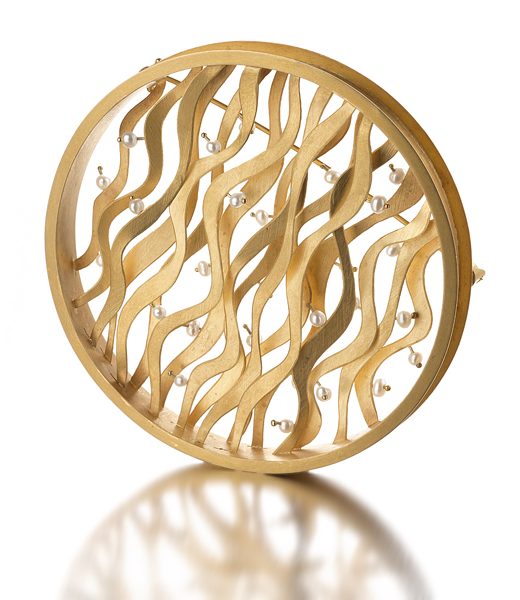
Antonella Villanova: The show Interno, by Lucia Massei and Pizzi Cannella, came to be because of the work of both the artists. It wasn’t just a collaboration between the two galleries. It was a project born around silk, a material used by Massei in her latest work and by Pizzi Cannella. I don’t know if the bond between jewelry and contemporary and fine arts is something to chase after, but for sure it’s nice to see the two things in relationship. I did have the opportunity to show these two realities together, but it doesn’t mean it’s necessary. At Design Miami/Basel, I have tried to support the jewelry with the works of young designers, not exhibiting them in a classic way but creating a relationship with these other worlds. I believe in a dialogue between disciplines, quality, and creativity.
Can you talk a bit about your experiences at Design Basel and Design Miami? I know you were just in Miami this past December and have been doing fairs since 2012, including Collect that year. What have these experiences been like for you?
Antonella Villanova: The Collect experience has been very interesting and beautiful, but for me, not quite satisfying enough from a research point of view. Design Miami/Basel, in which I am honored to take part, gives me more of an opportunity for broader research and connections. I can present objects of a wider range that perhaps come from different worlds. These fairs are not just places for secondary visibility offered to galleries.
Additionally, these fairs are always a challenge to do better, which is very important for the gallery and for the artists/designers.
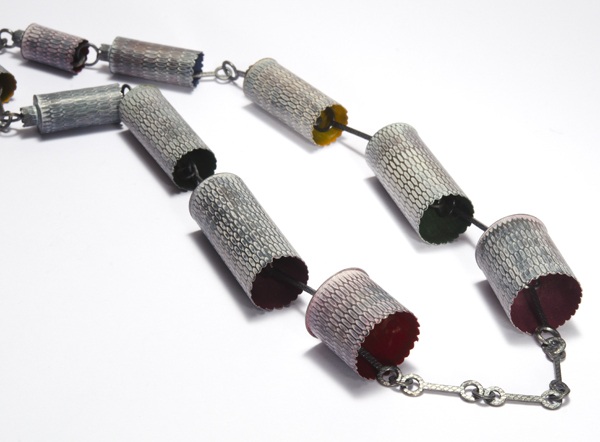
Antonella Villanova: The artists I work with are all very different, but if you come to my gallery and look at their work, one next to an another, I am sure you will notice that they are each responding to what I believe is la linea (the line) of my work.
In your opinion, is contemporary jewelry more related to fine/contemporary art or to design? Do these kinds of distinctions matter to you?
Antonella Villanova: I think that this argument is fairly boring, and it should be looked at from a historical and aesthetic point of view regarding various disciplines. I don’t think that such differences are that important unless it respects, as I said, a historical and aesthetic context, which is impossible to tackle.
I know you have a close relationship with the contemporary jewelry school Alchimia, also in Florence. When acquiring artists to represent, will selecting fresh talent coming out of the school remain an interest of the gallery? This is how you found Patrick Davison, who graduated in 2012, correct?
Antonella Villanova: Alchimia is a big resource, not just for my gallery but also for Italy. For me, it’s about the availability to be in touch with young people who are all passionate about this kind of work. Regarding Patrick Davison, he once curated a beautiful window display at Alchimia, and so I asked him to do a similar project for my space in Via Della Spada. It didn’t have much to do with jewelry, but in the end, he couldn’t make it because he was leaving Italy for home. Eventually, we saw each other again, he showed me his work, and I found it amazing. That’s how it started.
So, it’s not so much a priority to find young artists through Alchimia, but it can happen. Only the Arno River divides us.
Do you have any exciting plans for the future, as far as programming or collaborations go?
Antonella Villanova: I have a lot of projects in mind, but I’d rather not reveal them yet.
Thank you.
